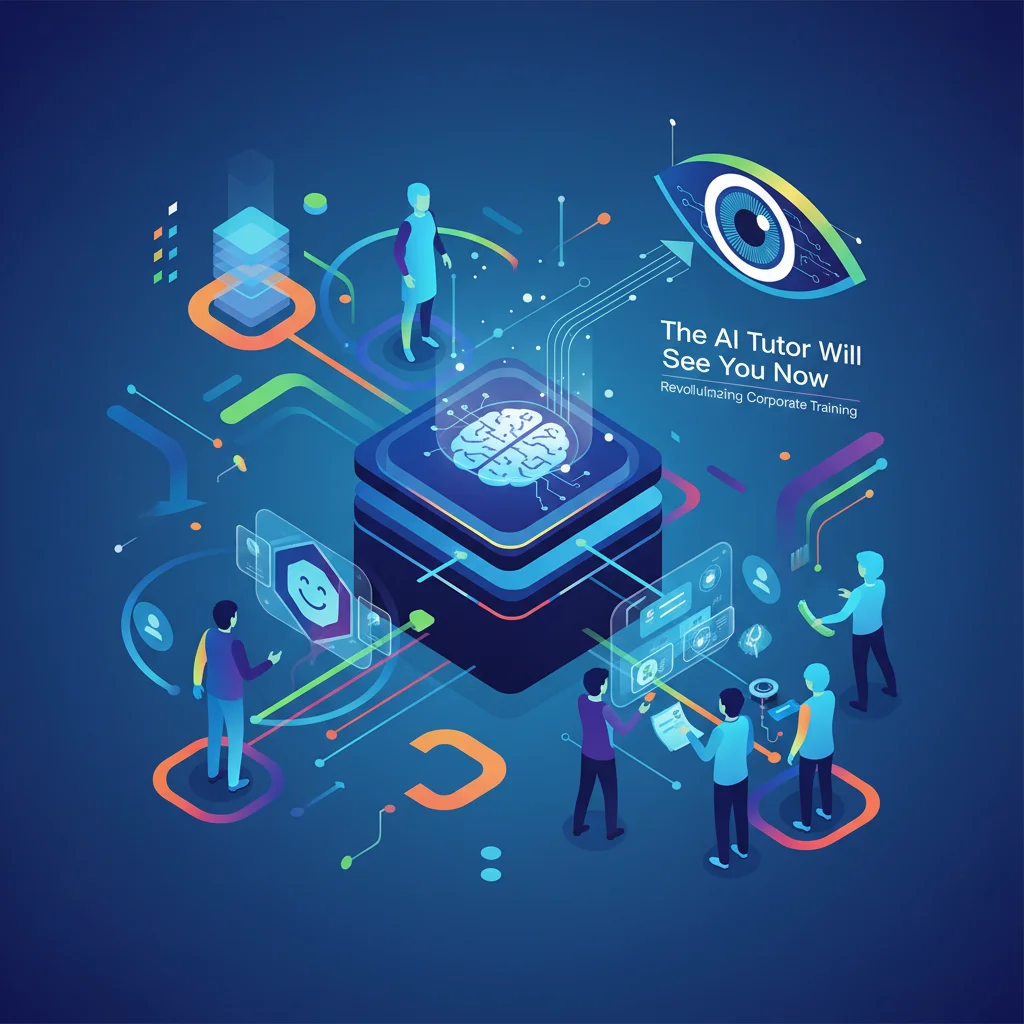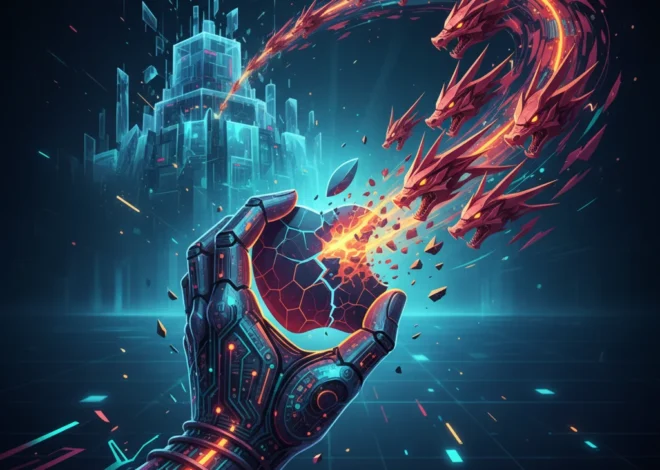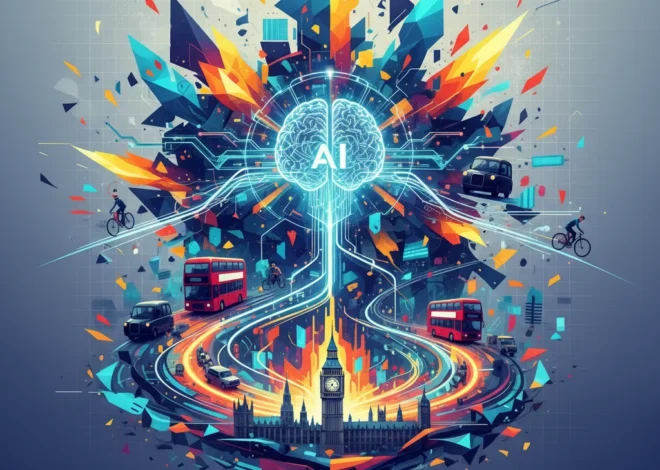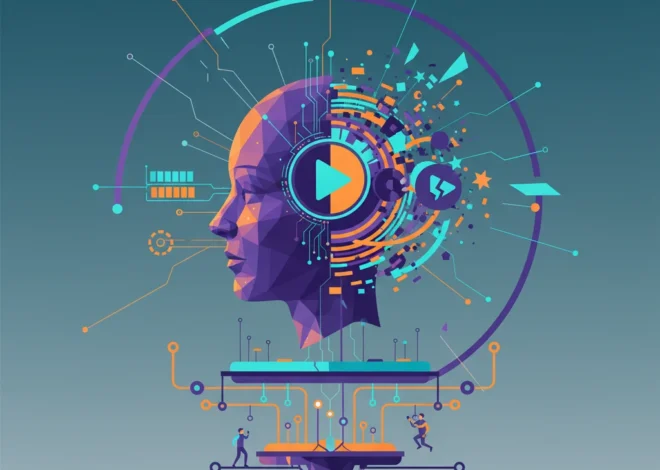
The AI Tutor Will See You Now: How AI is Revolutionizing Corporate Training
Remember the last mandatory corporate training you had to sit through? Chances are it involved a clunky webinar, a 90-page PDF, or a “death by PowerPoint” session that felt more like a test of endurance than a learning experience. For decades, workplace training has been a one-size-fits-all affair, struggling to keep up with the pace of modern business. But that’s all about to change. A new wave of innovation is sweeping through HR and Learning & Development departments, and it’s powered by artificial intelligence.
Forget passive learning. The future of upskilling is interactive, personalized, and available 24/7, thanks to AI-powered tutors and coaches. These aren’t just glorified chatbots. We’re talking about sophisticated software platforms that can simulate real-world scenarios, provide instant feedback, and adapt to each employee’s unique learning style. This isn’t science fiction; it’s the new reality for forward-thinking companies, and it’s poised to transform how we build skills in the workplace.
From Monologue to Dialogue: The Dawn of Interactive Learning
The fundamental problem with traditional training is its passive nature. You listen, you read, and you hope something sticks. The new paradigm, driven by AI, is built on active participation. Imagine a new sales representative practicing their pitch not on a real, high-stakes client, but with an AI that can simulate different customer personalities, from skeptical to enthusiastic. Or a new manager learning to handle a difficult performance review by workshopping their approach in a safe, judgment-free digital environment.
This is precisely what’s happening at global giants. Staffing firm Adecco, for instance, is using an AI-powered platform to train thousands of its recruiters. Similarly, pharmaceutical leader Sanofi is leveraging AI to help its managers navigate challenging conversations. According to a report in the Financial Times, the goal is to create a space for “practice, feedback, and reflection.”
This shift represents a powerful automation of routine training, but more importantly, it marks the “democratisation of coaching.” Historically, one-on-one coaching was a perk reserved for senior executives. Now, AI-driven SaaS platforms can provide personalized guidance to every employee, from the front lines to the C-suite, at a fraction of the cost.
Under the Hood: The Technology Powering Your New AI Coach
So, how does this digital magic actually work? The engine behind these AI tutors is a combination of cutting-edge technologies, primarily built upon the power of machine learning and Large Language Models (LLMs)—the same technology that powers tools like ChatGPT.
Here’s a simplified breakdown:
- Large Language Models (LLMs): These AI models are trained on vast amounts of text and data, enabling them to understand, generate, and interact in natural human language. This allows the AI tutor to have fluid, realistic conversations.
- Scenario-Based Programming: Companies and startups in this space design specific training modules. For example, they can program the AI to act as a disgruntled customer, a nervous job candidate, or a high-performing but difficult team member.
- Cloud-Based SaaS Platforms: These tools are delivered via the cloud, making them easily accessible and scalable across a global workforce. No complex installations are needed; employees can access their AI coach from a laptop or phone.
- Feedback Loops: The most advanced systems don’t just talk; they listen. They analyze the user’s word choice, tone (in voice-based systems), and response patterns to provide instant, constructive feedback.
To truly grasp the magnitude of this change, let’s compare the old way with the new.
| Feature | Traditional Corporate Training | AI-Powered Workplace Learning |
|---|---|---|
| Format | Group webinars, pre-recorded videos, static documents (PDFs) | One-on-one interactive simulations, personalized role-playing |
| Pacing | One-size-fits-all, fixed schedule | Self-paced, on-demand (24/7 access) |
| Feedback | Delayed, often generic, or none at all | Instant, specific, and data-driven |
| Engagement | Passive listening and reading | Active participation and skill application |
| Scalability | Limited by instructor availability and cost | Highly scalable and cost-effective |
The Billion Handshake: Why Tech Giants Are Buying the Physical 'Warehouses' of the AI Revolution
The Human Touch: Where AI Still Can’t Compete
While the potential of AI tutors is immense, it’s crucial to recognize their limitations. These systems are incredibly effective for teaching structured, repeatable skills—like following a sales script, conducting a structured interview, or adhering to compliance protocols. However, they begin to falter when faced with deep human nuance and emotional complexity.
As one expert noted in the FT article, AI is not yet equipped to handle “very sensitive, personal conversations” that require true empathy and emotional intelligence. A human coach can read subtle body language, understand cultural context, and connect with a person on a level that an algorithm simply cannot replicate. The goal, therefore, is not to replace human trainers but to augment them.
By automating the foundational, repetitive aspects of training, AI frees up human experts to focus on what they do best: high-touch, high-empathy coaching for complex leadership challenges, strategic thinking, and navigating sensitive interpersonal dynamics. The future is a hybrid model where AI builds the foundation and humans provide the mastery.
The Billion Handshake: Why Tech Giants Are Pouring a Fortune into AI's Physical Backbone
The Billion-Dollar Question: Cybersecurity and Data Privacy
As with any technology that handles employee data, cybersecurity and privacy are paramount. When an employee is practicing a sensitive conversation with an AI, that data has to go somewhere. Where is it stored? Who has access to it? Could a manager review an employee’s “failed” practice sessions?
These are not trivial questions. Companies adopting these platforms must ensure their vendors have ironclad security protocols. This includes:
- Data Encryption: All data, both in transit and at rest on cloud servers, must be encrypted.
- Anonymization: Where possible, data used for analytics should be anonymized to protect individual privacy.
- Clear Data Policies: Employees must be informed about how their data is being used, what is being tracked, and for what purpose. Transparency is key to building trust.
The potential for misuse is real, and a data breach involving sensitive employee performance data could be catastrophic. For startups entering this space, building a platform with a “security-first” mindset isn’t just a feature; it’s a prerequisite for earning enterprise trust. The market for these tools is already attracting serious investment, with some AI model builders like Adept reportedly being valued at over $10 billion, signaling the high stakes and high expectations in this domain.
Beyond the Zap: How AI and the Cloud are Transforming the Taser
The Future of Work is a Coached Future
The rise of the AI tutor is more than just a new training tool; it’s a reflection of a broader shift in the nature of work. In an economy where skills have a shorter and shorter shelf life, the ability to learn continuously is the ultimate competitive advantage. AI-powered learning platforms provide a scalable, engaging, and effective way to foster that culture of continuous improvement.
We are moving away from the era of sporadic, event-based training and into an age of perpetual, personalized development. The AI tutor won’t replace the human mentor, but it will become an indispensable partner, helping us practice, refine, and master the skills we need to thrive in an increasingly complex world. The classroom is no longer a room; it’s a conversation with an intelligent machine, available whenever and wherever you’re ready to learn.


